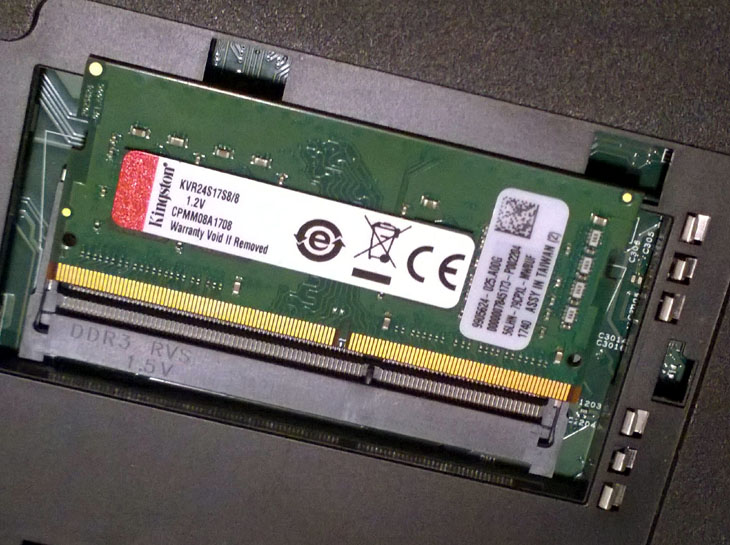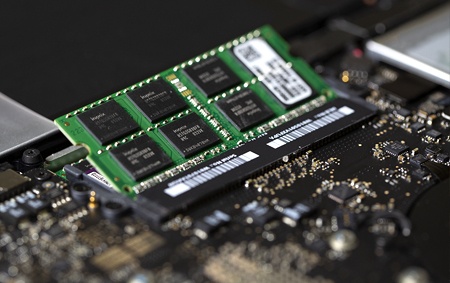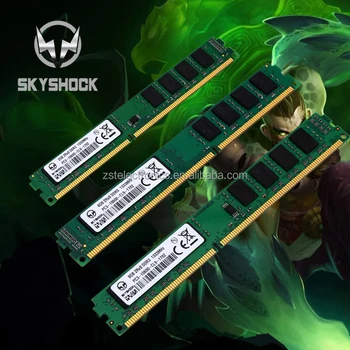How To Use Ddr4 Ram In Ddr3 Slots

Physically, a DDR4 module, or dual in-line memory module (DIMM), looks very similar to a DDR3 DIMM. However, DDR4 has 288 pins compared with DDR3’s 240 pins; DDR4 SO-DIMMS have 260 pins instead of 204 in DDR3. The DDR4 key notch is in a different place, and the edge connector looks like a slightly curved “V” to facilitate insertion. DDR4 isn't bacwards compatible with DDR3. In other words, you can't use the newer DDR4 memory in an older DDR3 memory slot. If you are only wanting to upgrade the RAM, you can put another stick or a larger stick of RAM to slightly increase the performance of the computer.

Are DDR3 and DDR4 laptop memory (RAM) compatible? That’s a common question when it comes to memory upgrades. For instance, you bought a new laptop with DDR4 RAM and want to add more memory to it by inserting a DDR3 RAM module from your older laptop. You wonder if that’s possible. Unfortunately, that can’t be done. DDR3 and DDR4 laptop memory are not compatible / interchangeable.
First of all, a DDR3 laptop RAM module can’t physically fit into a DDR4 laptop RAM slot and vice versa. Notches on the connectors of memory sticks are on different places. The same applies to corresponding bumps in the RAM slots on notebook’s motherboards. Also, the number of pins doesn’t match. A DDR3 laptop memory module has 204 pins, whereas DDR4 has 260. Finally, DDR3 memory is a bit shorter than DDR4 – 2.66 versus 2.74 inches.
If you use all four slots, your computer will run as if all the slots have DDR3 memory installed and will not make use of the performance of the DDR4 sticks. RAM Slots on a Mac The only iMac currently on the market with user-serviceable RAM is the 27 inch model. The short answer is that yes, there are plenty of differences, but most of the time your motherboard will make the decision for you. A motherboard with DDR4 slots cannot use DDR3, and you can't put.
So, a DDR3 memory module won’t fit in a DDR4 slot…

And a DDR4 stick is incompatible with a DDR3 slot…

Besides the physical differences, DDR3 and DDR4 RAM differ in voltages. DDR3 uses a voltage of 1.5V (or 1.35V for DDR3L variant). DDR4 uses 1.2V. It is more power efficient and generally faster, but doesn’t noticeably improve overall performance nor battery life of notebooks.
Note: If you see “SODIMM” in specs of both DDR3 and DDR4 laptop memory, that doesn’t mean they are compatible. SODIMM only means they are small memory modules commonly used in laptops and some small form factor PCs, as opposed to physically much bigger DIMM memory used in traditional desktop computers. As a side note, DDR3 and DDR4 DIMMs aren’t compatible neither.
Are DDR3 and DDR4 laptop memory (RAM) compatible? That’s a common question when it comes to memory upgrades. For instance, you bought a new laptop with DDR4 RAM and want to add more memory to it by inserting a DDR3 RAM module from your older laptop. You wonder if that’s possible. Unfortunately, that can’t be done. DDR3 and DDR4 laptop memory are not compatible / interchangeable.
First of all, a DDR3 laptop RAM module can’t physically fit into a DDR4 laptop RAM slot and vice versa. Notches on the connectors of memory sticks are on different places. The same applies to corresponding bumps in the RAM slots on notebook’s motherboards. Also, the number of pins doesn’t match. A DDR3 laptop memory module has 204 pins, whereas DDR4 has 260. Finally, DDR3 memory is a bit shorter than DDR4 – 2.66 versus 2.74 inches.
How To Use Ddr4 Ram In Ddr3 Slots Ram
So, a DDR3 memory module won’t fit in a DDR4 slot…
And a DDR4 stick is incompatible with a DDR3 slot…
Can You Use Ddr4 Ram In Ddr3 Slots
Besides the physical differences, DDR3 and DDR4 RAM differ in voltages. DDR3 uses a voltage of 1.5V (or 1.35V for DDR3L variant). DDR4 uses 1.2V. It is more power efficient and generally faster, but doesn’t noticeably improve overall performance nor battery life of notebooks.
Note: If you see “SODIMM” in specs of both DDR3 and DDR4 laptop memory, that doesn’t mean they are compatible. SODIMM only means they are small memory modules commonly used in laptops and some small form factor PCs, as opposed to physically much bigger DIMM memory used in traditional desktop computers. As a side note, DDR3 and DDR4 DIMMs aren’t compatible neither.